Google Workspace is a one-stop shop for business productivity apps, but for a long time, Google didn’t really offer customers any kind of team communication tool. Sure, there was Hangouts in Gmail, but that was a consumer tool that only really offered direct messages and video chat. Using it for any kind of group communication was chaos. As a result, many companies that pay for Google Workspace also pay for a separate workplace chat app like Slack.
Google Chat (formerly known as Google Hangouts Chat) is Google’s answer to this. Here’s a quick guide to using Google Chat—and the best tips I’ve found to make Chat a productive place to discuss your work and push projects forward.
Table of contents:
What is Google Chat?
Google Chat is Google’s answer to Slack. It’s a team chat app that integrates tightly with other Google products like Gmail, Drive, Calendar, and Meet.
While there’s a consumer version of the app that’s available to anyone with a Google account, Google Chat is best known as a workplace collaboration tool. Organizations that use Google Workspace can use Chat to coordinate projects, host real-time discussions, and share company announcements.
Slack launched three years earlier than Google Chat, and for years, Google struggled to keep up. But recently, Chat has gotten more powerful: Google has added Slack-inspired features like threading and huddles, and its native integration with other Google products provides a unique advantage.
Who is Google Chat for?
Google Chat is best for customers who are already committed to the Google ecosystem and are looking for a cost-effective chat solution.
Imagine you’re the IT manager of a company with thousands of employees. After reviewing your expenses, you notice something: you’re paying $45,000 a month for Google Workspace and another $25,000 per month for Slack. With Google Chat getting better each year, does it still make sense to pay for both?
Google Chat features
If you’re evaluating Google Chat as a possible option, here are the features worth spending some time with.
Messaging
The core of any chat app is just that: chat. Google Chat has all the features you’d expect in this department: direct messages, group chats, mentions, and emojis and GIFs.
Most of your activity within Google Chat is likely to take place in Spaces, which are souped-up chat rooms (like Slack’s channels) devoted to a single topic.
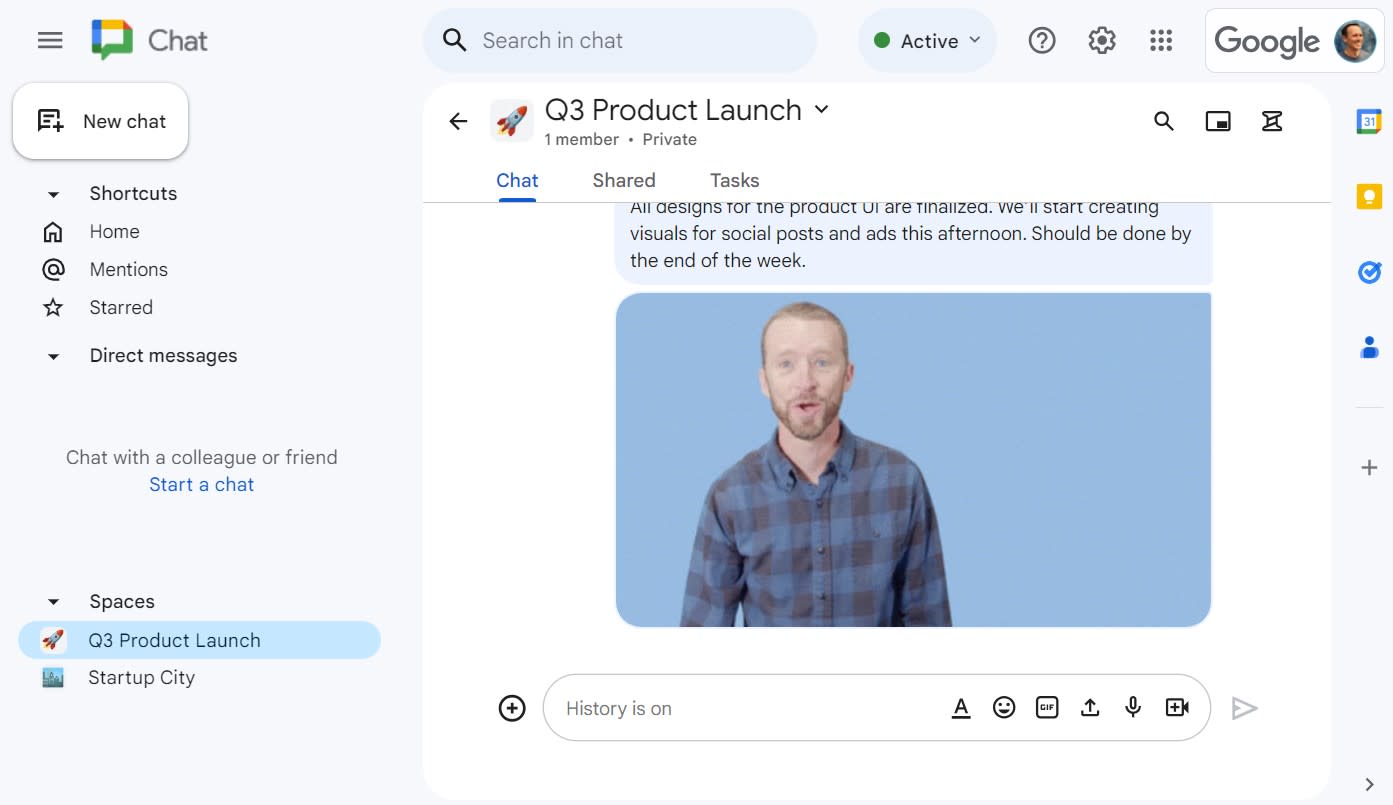
In 2023, Google Chat introduced Slack-style in-line replies (AKA “threading”), replacing an older, cluttered system of quoted replies. When you click a thread on desktop, a sidebar pops up, letting you follow the thread without losing track of the overall conversation.
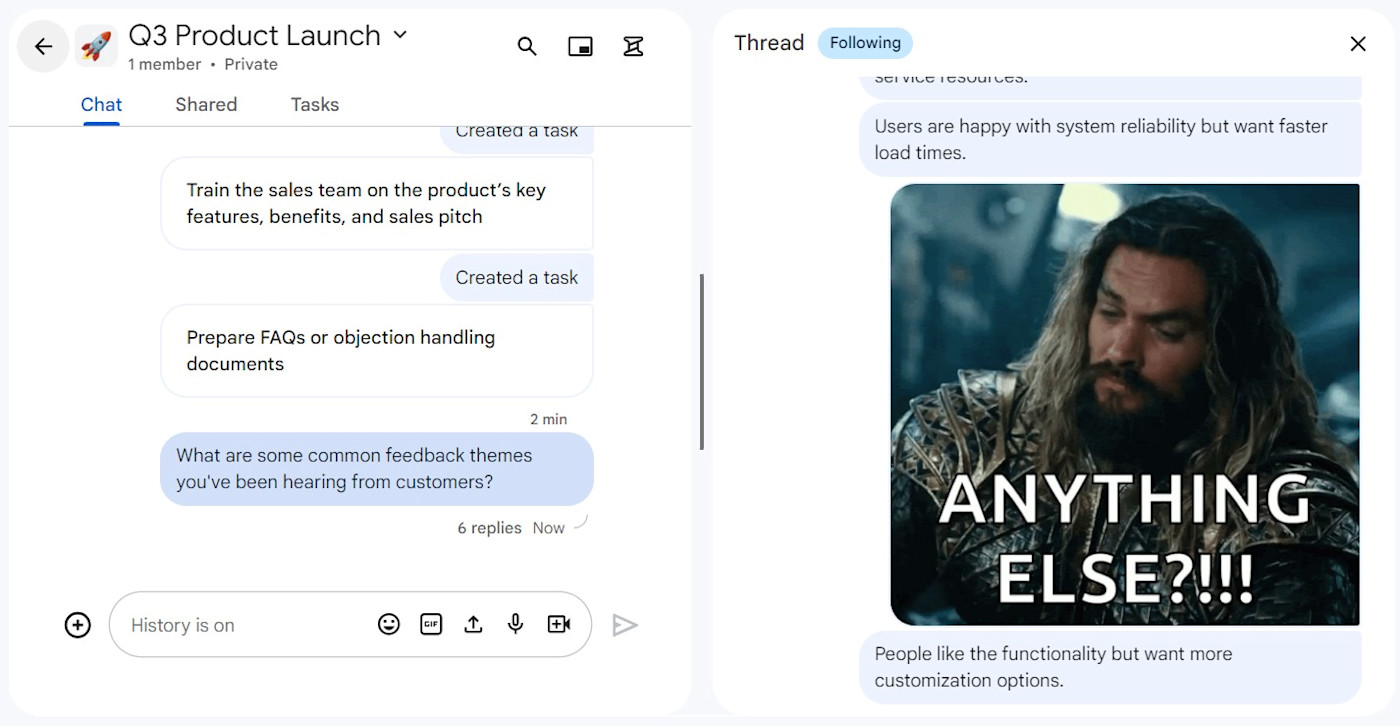
In a nod to its enterprise customers, Google has dramatically expanded the number of users who can be added into a single space. Originally, the cap was 8,000 users; in 2023, the limit increased to 50,000 users. Then, in 2024, Google increased the number of users allowed in each space to a staggering 500,000. (The update is still rolling out.)
Meetings and collaboration
Google Chat’s integration with Google Meet makes it simple to chat with colleagues via video. By clicking the camera icon when composing a message, you’ll embed a Google Meet link. After you send it, anyone in your space can click the link to jump into the meeting.
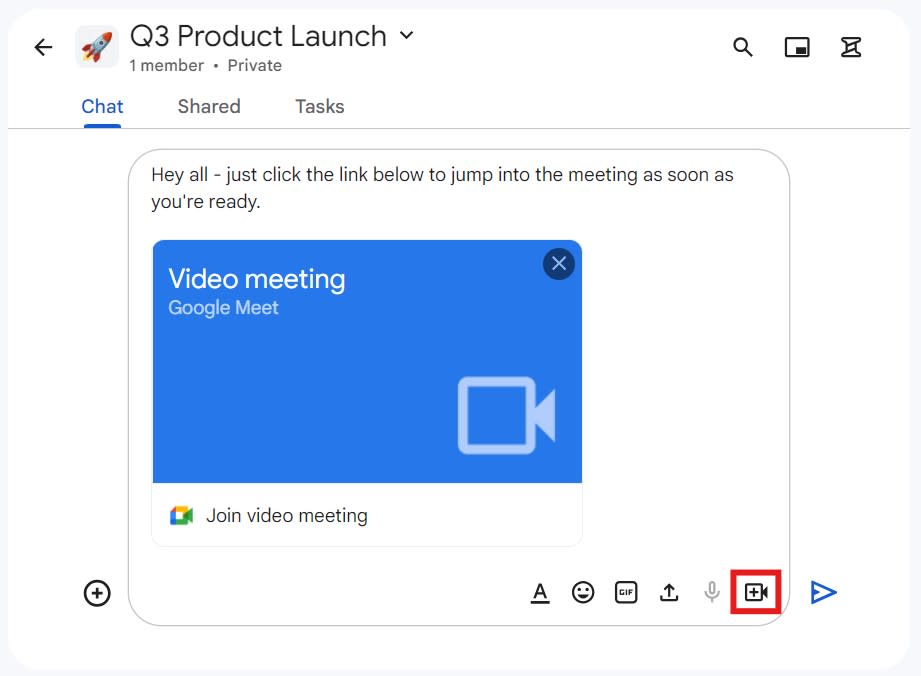
Google Meet holds its own quite well against leading alternatives like Zoom. It has all the features you’d expect from a video meeting app: screen sharing, recording, in-meeting chats, and collaborative ideation tools. Plus, of course, virtual backgrounds and goofy filters—less essential, but still key for adding some spice to remote work.

The only downside of Google Meet? Inviting people to a meeting can feel a little more formal, which isn’t ideal when all you need is a quick collaboration session. Slack addressed this issue with a feature called huddles, which is intended to evoke the feeling of walking casually over to a colleague’s desk. Huddles don’t have designated start times: you just initiate one, and people join whenever they’re ready. Google Chat announced a similar feature coming soon called—wait for it—huddles. Shameless feature duplication aside, huddles will add a useful alternative to Google Meet’s standard video conferencing format.
You can also manage simple projects directly from Google Chat. While this isn’t a replacement for a full project management tool, each Google Chat space comes equipped with simple file management and task management capabilities:
-
Any file uploaded to the space is added to the Shared tab for easy reference.
-
Tasks mentioned in the chat can be added to the Tasks tab, along with a due date and an assignee.
-
When you add dates to your tasks, it sends them automatically to the Google Calendar of the people responsible.
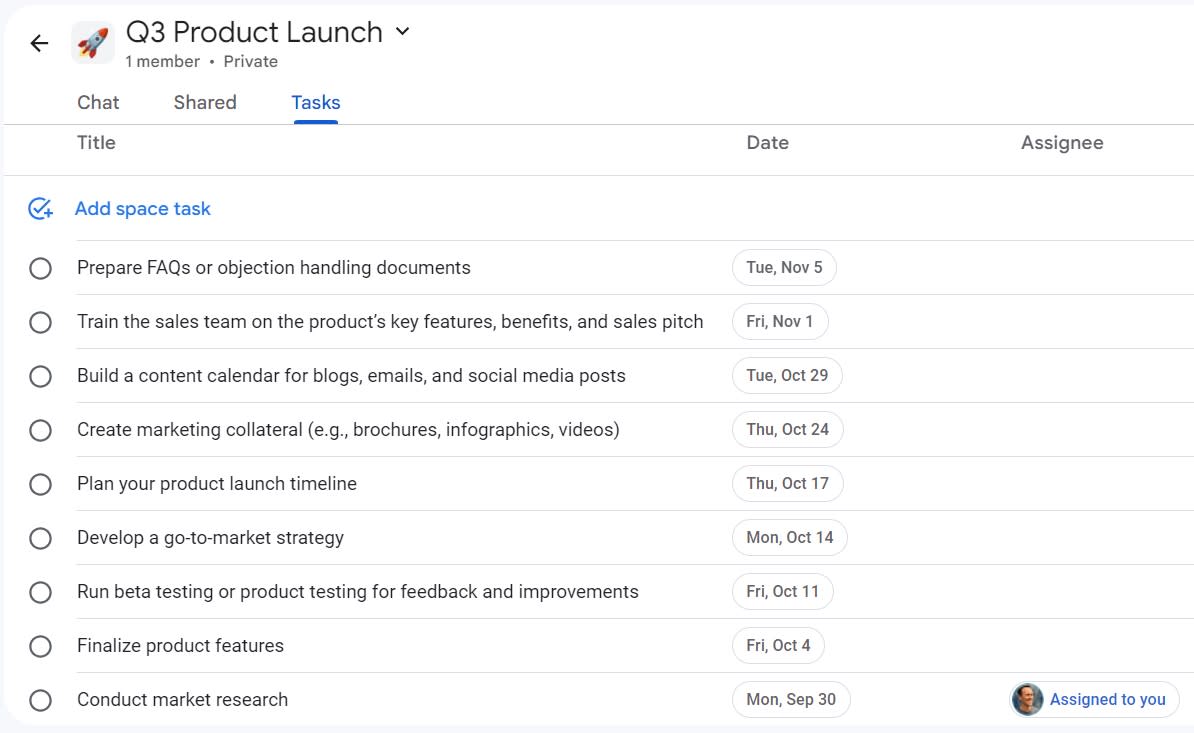
Integration with Google Workspace
Many businesses use Google Chat because they already have access to it for free with Google Workspace. But perhaps the next most compelling motivation is Google Chat’s native integration with Google’s ecosystem of apps.
The Google Workspace integration is incredibly smooth. For example, let’s say you attempt to share a file from your Drive in Google Chat, but it’s still set to Private. Because of Chat’s integration with Drive, you’ll see an in-chat pop-up that prompts you to adjust the permissions before even sending your message.
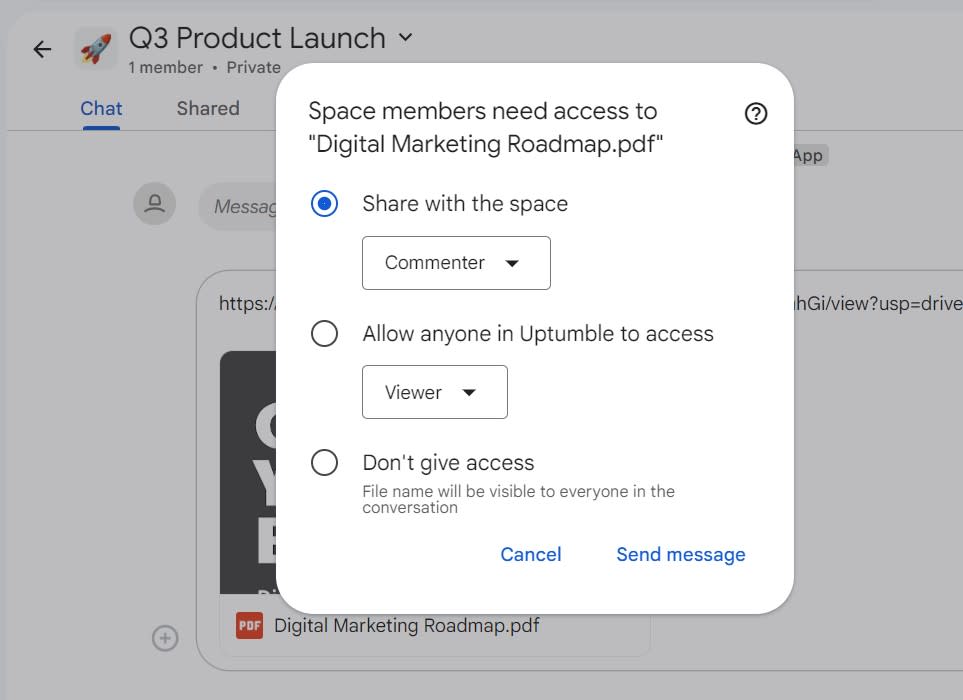
Other Google Workspace integration are equally useful:
-
Google Meet: Just click on the video camera icon as you’re composing a message, and voilà—a Google Meet link is sent out to the Google Chat space.
-
Google Calendar: It’s easy to see if your colleagues are busy or not based on their Google Calendar schedules.
-
Security and compliance: Since Google Chat inherits its admin settings from Google Workspace, you don’t have to undertake a separate effort to set up security, permissions, and compliance. Chat also allows you to assign admins to specific spaces.
Google Chat apps
Google Chat is improving quickly, but it’s still not as full-featured as Slack or Teams. Fortunately, a wide selection of apps helps to fill in the gaps. About a dozen apps are built by Google, but most are created by third parties.
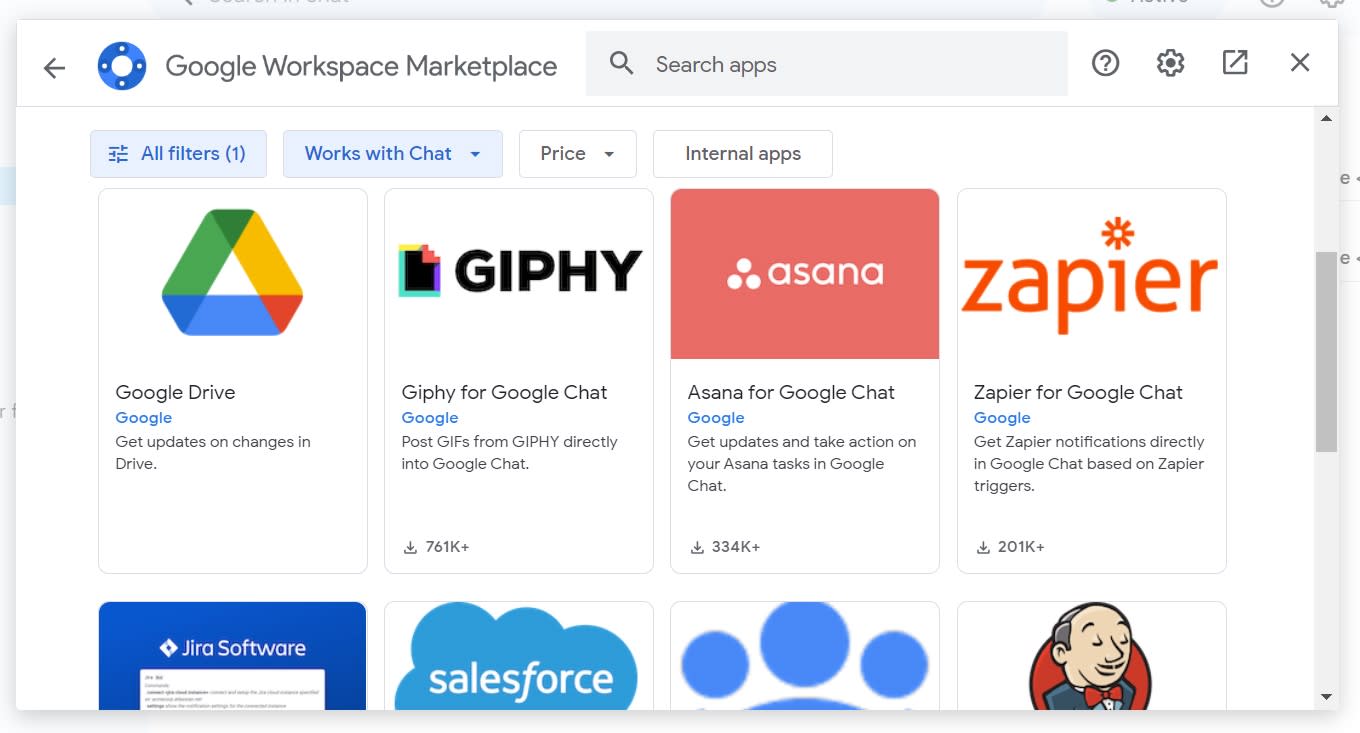
Here are a few apps to add to Google Chat right away:
-
GIPHY: You can’t expect your team to build camaraderie online without GIFs, can you?
-
Absolute Poll: Run polls to quickly get input on things like meeting times.
-
DailyBot: Generate AI summaries, send surveys, and delegate recurring tasks to a bot.
-
Send It Later: Schedule messages to be sent later, or on a recurring schedule.
The Google Workspace Marketplace is also full of integrations with other popular apps like Salesforce, Asana, monday.com, Trello, and Loom.
And with Zapier’s Google Chat integration, you can set up in-chat reminders and notifications triggered by almost any app you can imagine. Learn more about how to automate Google Chat, or get started with one of these pre-made workflows.
Zapier is the leader in workflow automation—integrating with thousands of apps from partners like Google, Salesforce, and Microsoft. Use interfaces, data tables, and logic to build secure, automated systems for your business-critical workflows across your organization’s technology stack. Learn more.
AI-powered features
Google has introduced Gemini into Google Workspace, but as of this writing (September 2024), it hasn’t quite made its way to Chat. Even after upgrading to Gemini for Workspace, I still didn’t have access to any Gemini-powered features.
One simple AI-powered feature that’s already been integrated into the Google Chat experience is Smart compose, which offers contextually-aware suggestions as you type. If you’ve ever used Gmail or even autocomplete on your smartphone, you’ll quickly get the hang of it.

Beyond that, there’s not much else you can do. But Google says that soon you’ll be able to use Gemini as a sort of AI sidekick to help you:
Another promising feature, Gemini in AppSheet, lets you use natural language to create custom Google Chat-based apps that automate your business processes. Unfortunately, despite upgrading to Gemini and setting up AppSheet separately, I couldn’t get this to work. (Reviews of the app indicate others have had the same problem.)
Google Chat productivity tips
To get the most out of Google Chat, make sure to take advantage of these not-so-obvious features.
Forward messages to your Gmail inbox
If you’re someone who—like me—uses your Gmail inbox as an ad hoc task management system, Google Chat has a solid feature for you. In Chat, click the three dots next to any message, and then click Forward to inbox. You’ll get a copy of the message in your email inbox, along with a direct link that takes you back to the relevant conversation for reference.
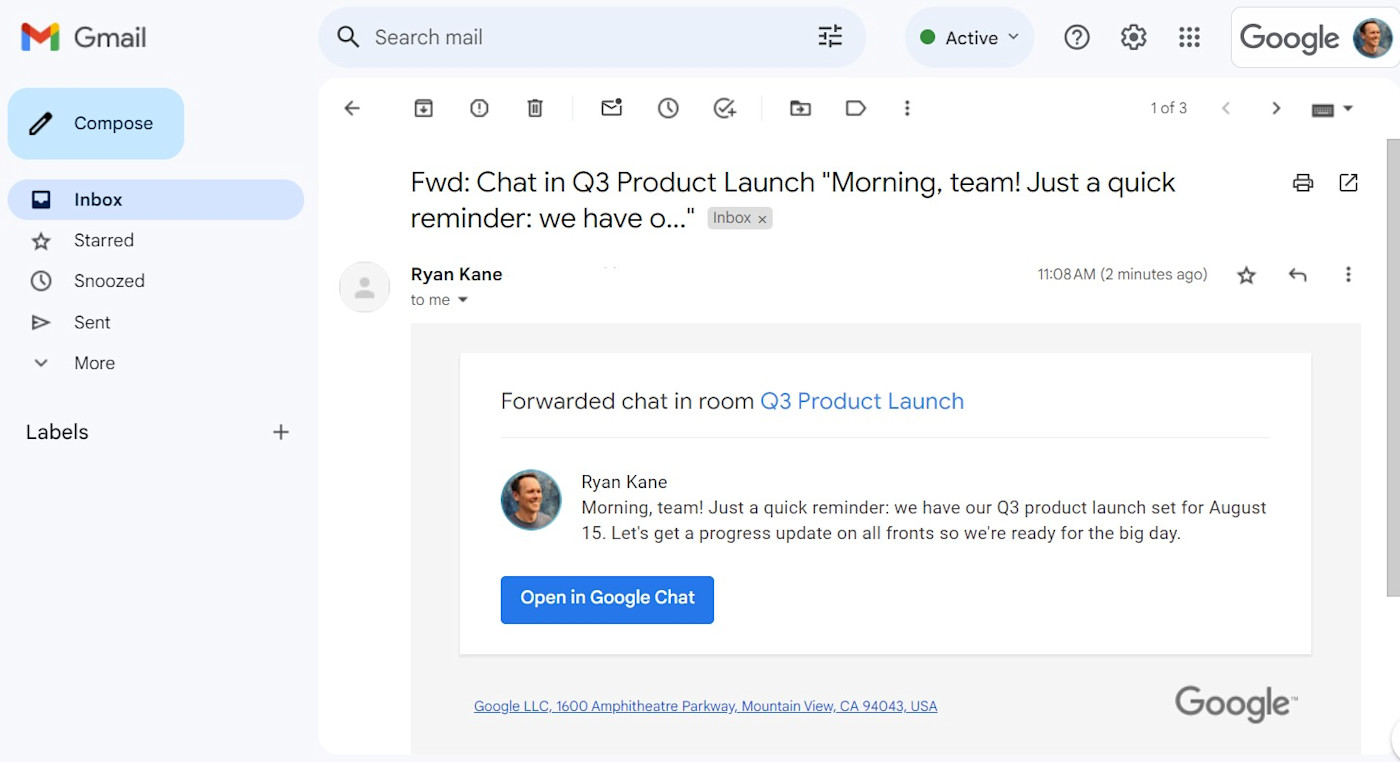
See read receipts for each message
Slack doesn’t offer read receipts—Google Chat does. Just click the three dots next to a message, then click See message views.
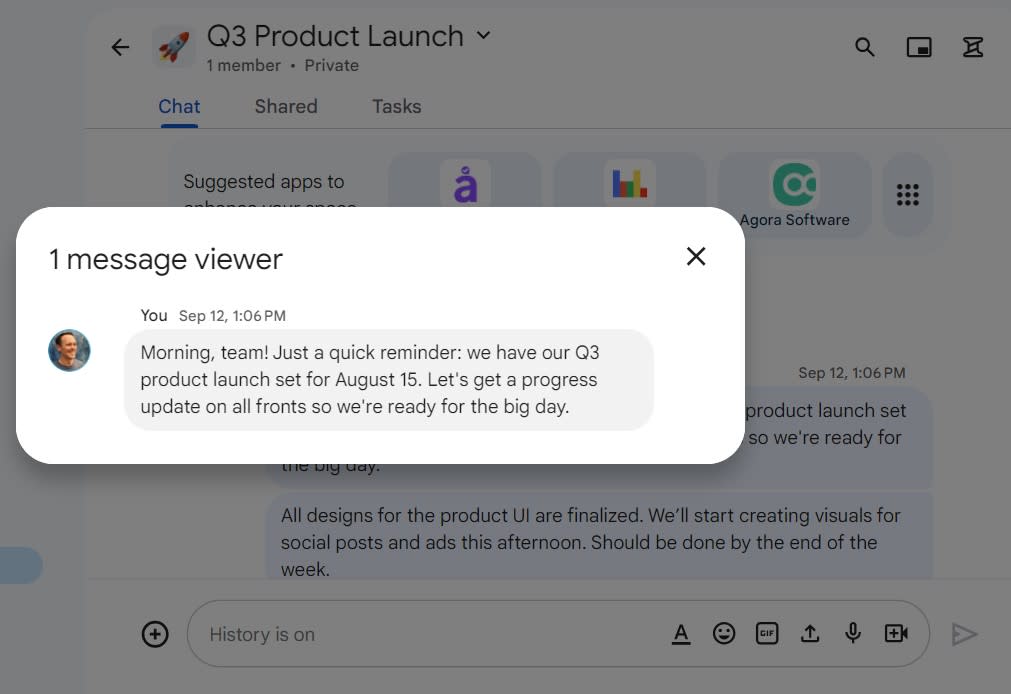
Convert messages into tasks
Any message in a Google Chat space can become a task. Click the three-dot menu next to any message, and select the Create space task option. The message will automatically move to the Tasks list in your space, and you’ll have the option to add a due date and assign the task to someone.
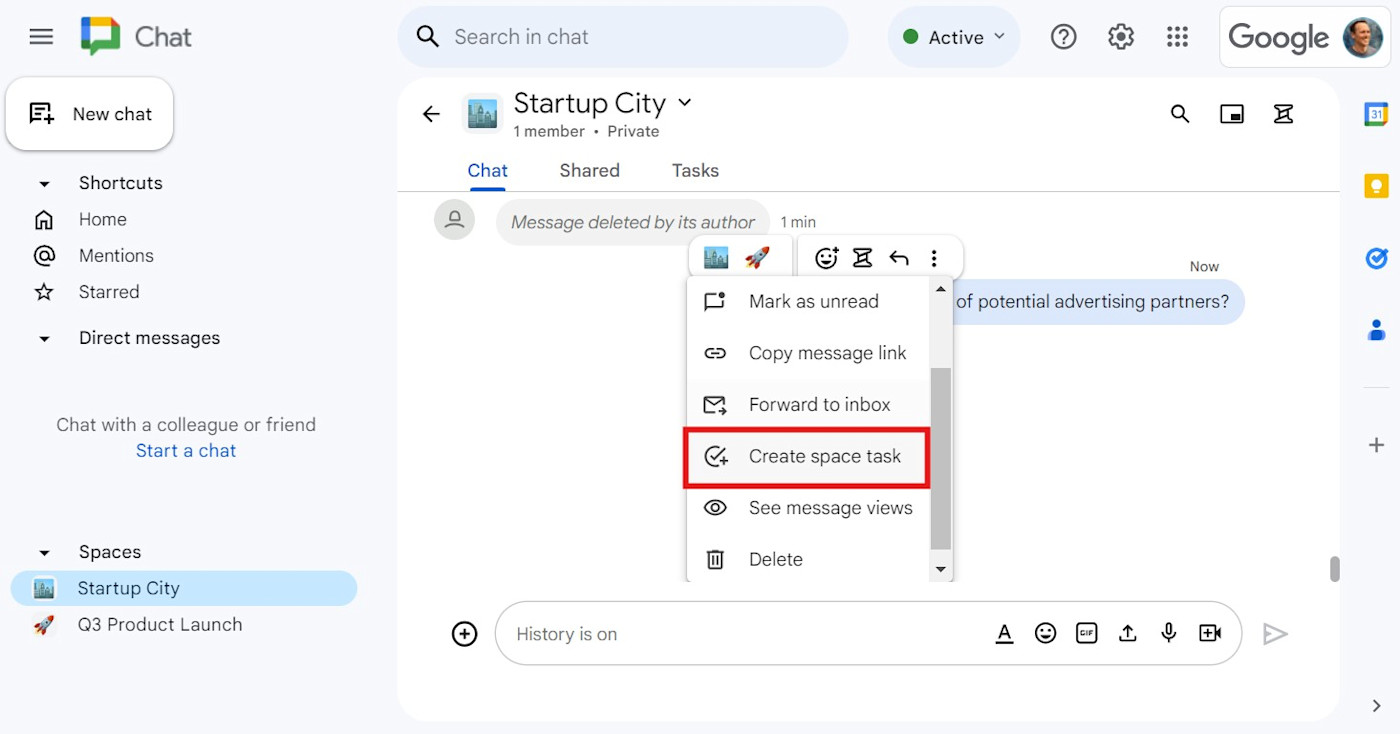
Edit messages
Editing messages isn’t a particularly groundbreaking feature. But it’s worth mentioning because it wasn’t available in Google Chat originally—now it is. Just click the three-dot menu next to any message, then click Edit.
Just as when composing a new message, you can format the message and add emojis and GIFs. After editing, your message will show as Edited.
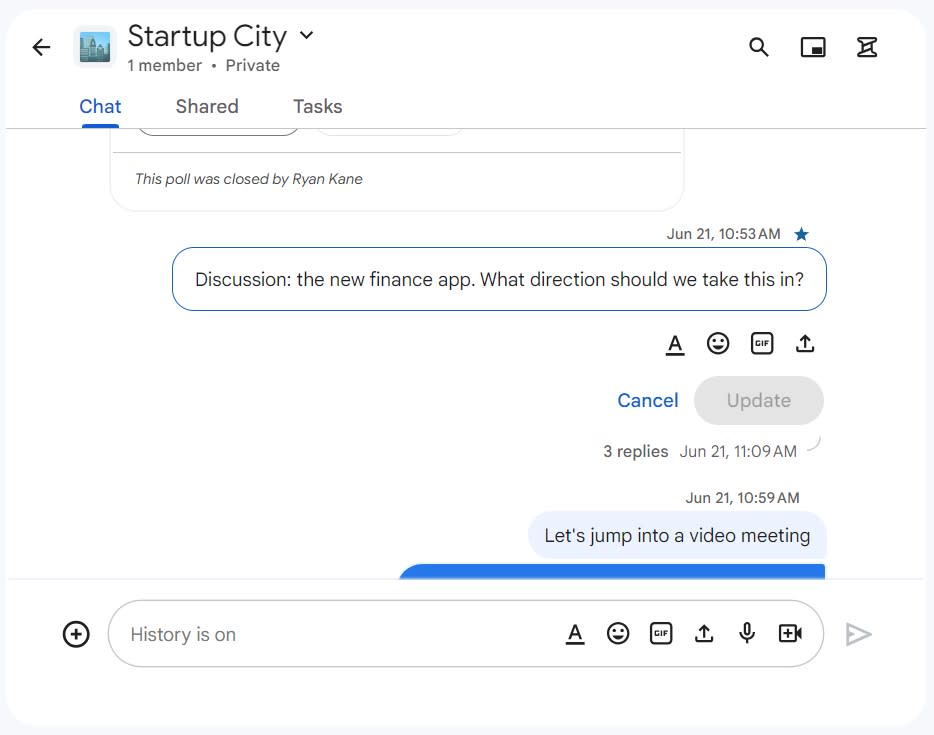
Should you make the switch to Google Chat?
Google Chat was a relative latecomer to the world of workplace chat. But with multiple product updates each year, Google seems committed to quickly improving its chat app and making it an even more attractive Slack alternative.
Google Workspace starts at $14.40/user/month, with the option to add Gemini AI for $24/user/month. If you’re thinking about switching to Google Chat, it’s easy to give it a try first. Make sure you’re logged into your Google account, then go to chat.google.com.
Related reading:
This article was originally published in February 2018 by Matthew Guay. The most recent update was in September 2024.